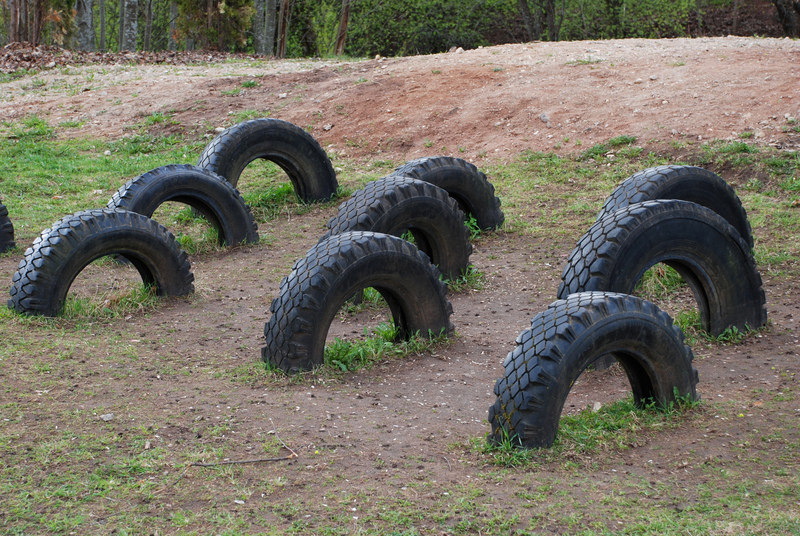Smart Ways to Handle and Dispose of PPE Waste Responsibly
The widespread use of personal protective equipment (PPE)--such as face masks, gloves, gowns, and face shields--has become an essential part of our lives, especially in the wake of the COVID-19 pandemic. However, this upsurge in PPE consumption has brought forth a new environmental challenge: responsible disposal and management of PPE waste. Improper handling and disposal of PPE waste can cause serious threats to public health, wildlife, and the environment. This comprehensive guide explores smart ways to handle and dispose of PPE waste responsibly, ensuring the safety of both people and the planet.
Understanding PPE Waste and Its Environmental Impact
PPE waste includes used or discarded items such as:
- Single-use face masks
- Disposable gloves
- Protective gowns and aprons
- Face shields and goggles
- Shoe covers, caps, and hairnets
While these items are crucial for infection control and personal safety, improper disposal leads to significant environmental hazards. PPE waste is primarily made from plastic and synthetic fibers, which are non-biodegradable and can remain in the environment for hundreds of years. This pollution contributes to landfills, clogs waterways, threats to marine life, and microplastic contamination.
Why is Responsible PPE Waste Disposal Important?
- Prevents the spread of infectious diseases by breaking the transmission cycle.
- Protects waste management workers from accidental exposure.
- Reduces plastic pollution in the environment and water bodies.
- Promotes sustainability by encouraging recycling and reuse where possible.

Smart Ways to Handle and Dispose of PPE Waste
Approaching PPE waste management with innovation, responsibility, and sustainability in mind is key. Here are smart strategies for handling and disposing of PPE waste responsibly:
1. Separation at the Source
Separating PPE waste from regular household or commercial waste is the first step in responsible disposal. Use labeled bins or bags exclusively for PPE items to prevent cross-contamination and to simplify subsequent waste processing.
- Install designated PPE disposal bins in workplaces, public areas, healthcare facilities, and homes.
- Ensure bins are clearly marked and have lids to prevent accidental contact.
- Educate family members or staff about the importance of source separation.
2. Safe Handling Procedures
Minimize direct contact with used PPE. Adhering to proper safe handling protocols protects you and others from potential contamination.
- Always wear gloves when removing, collecting, or transporting PPE waste.
- If gloves are not available, wash hands thoroughly before and after handling PPE waste.
- Never shake discarded masks, gloves, or other PPE to avoid releasing trapped pathogens.
3. Double Bagging for Added Protection
Place used PPE in a secure, leak-proof bag and double-bag to further reduce the risk of contamination or leakage. This is especially crucial for waste generated in healthcare or quarantine settings.
- Tightly seal both bags before disposal.
- Label bags as "PPE Waste" to alert sanitation workers.
4. Follow Local PPE Waste Disposal Guidelines
Many municipalities have established rules and facilities for PPE waste management. Contact your local waste authority to understand:
- Which types of PPE need special disposal treatment (e.g., masks or gloves from infected individuals).
- Designated pick-up schedules or drop-off points for PPE waste.
- Quarantine periods for PPE waste before offsite disposal, if required.
Always abide by official advice to ensure you're disposing of PPE waste both safely and legally.
5. Opt for Reusable and Eco-friendly PPE Where Possible
One of the smartest ways to cut down on PPE waste is by choosing reusable and biodegradable alternatives whenever possible.
- Use reusable cloth face coverings that can be safely washed and sanitized.
- Select PPE made from biodegradable materials or certified compostable products.
- Encourage suppliers and your workplace to provide sustainable PPE options.
This measure not only reduces single-use plastic waste but also lowers the environmental footprint of PPE consumption.
6. Do Not Litter PPE
Discarded masks and gloves littering streets, parks, waterways, and beaches have become a common sight since 2020. Never throw used PPE in open public spaces. Littered PPE can harbor viruses and poses a direct risk to animals and humans.
- Always use proper disposal bins for used PPE.
- Encourage others to dispose of PPE waste responsibly.
7. Sanitize and Pre-treat PPE Waste
Pre-treating PPE waste with appropriate disinfectants can reduce the risk of infection for waste handlers and sanitation workers.
- If possible, lightly spray PPE waste with a disinfectant before bagging.
- Let used masks and gloves sit in a sealed bag for 72 hours before disposal (check local recommendations).
8. Promote and Participate in PPE Recycling Programs
Recycling PPE waste is a growing but still emerging sector. Some companies and research initiatives are developing specialized recycling processes for items like masks, gloves, and gowns.
How can you help?
- Stay informed about local or national PPE recycling schemes.
- Participate in take-back programs and drop-offs organized by manufacturers, pharmacies, or local governments.
- Support organizations innovating in the field of PPE recycling.
9. Responsible Disposal for Healthcare and High-risk Settings
Healthcare facilities and laboratories deal with high-risk biohazardous PPE waste. Strict protocols must be followed:
- Utilize yellow biohazard bags for PPE waste.
- Ensure incineration or autoclave treatment of contaminated PPE.
- Train all staff on safe handling and disposal procedures.
Adhering to medical waste management regulations protects both staff and the broader community.
10. Awareness, Training, and Community Engagement
Spreading public awareness about proper PPE waste disposal is critical. Organize community drives, social media campaigns, and training programs on Responsible PPE Waste Management.
- Schools, workplaces, and local governments must educate the public on smart PPE disposal techniques.
- Employers should provide training and put up clear signage on disposal bins.
Innovative Solutions for Sustainable PPE Waste Management
While individual action is crucial, larger systemic and technological innovations can further enhance PPE waste management:
- Advanced Recycling Technologies: Companies are developing chemistry-based recycling that can break down PPE plastics and convert them into usable products like road materials or furniture.
- Biodegradable PPE: New materials such as polylactic acid (PLA), hemp, or bamboo are being used to manufacture masks that naturally decompose, minimizing long-term pollution.
- PPE Waste-to-Energy: Some facilities can safely incinerate PPE waste, capturing the energy generated to power electricity grids.
- Automated PPE Waste Sorters: Using AI and robotics to identify and separate PPE waste from mixed recycling streams increases recycling rates while protecting workers.
What Not to Do When Disposing of PPE Waste
Avoid these common mistakes that could put you or the environment at risk:
- Do not flush PPE items down toilets or sinks. They can block wastewater systems and pollute waterways.
- Do not burn PPE waste at home. This releases toxic fumes and could harm community air quality.
- Do not mix PPE waste with regular recyclables as most recyclers cannot process contaminated items.
- Do not reuse single-use PPE as this increases your risk of infection.
Compliance with Laws and Regulations
Many countries have enacted strict laws regarding PPE waste handling and disposal. Failing to comply can result in fines or health hazards. Always stay updated with your local waste management authority's recommendations and mandates.
- Follow the Occupational Safety and Health Administration (OSHA) guidelines in the US.
- Adhere to Environment Agency and public health authorities in your country.

Frequently Asked Questions About PPE Waste Disposal
Is PPE waste recyclable?
Most single-use PPE is not currently recyclable through regular municipal recycling programs due to contamination risks. However, specialized recycling initiatives are underway in some regions. Always check with your local authority.
Can I compost my used PPE?
Traditional PPE from plastic, latex, or synthetic materials is not compostable. Only select biodegradable PPE labeled as compostable should be composted according to the manufacturer's instructions.
How can I minimize my PPE waste?
- Choose reusable PPE where safe and appropriate.
- Buy high-quality items that last longer.
- Only use PPE when necessary, based on health guidelines.
Conclusion: Our Shared Duty for Responsible PPE Waste Management
The global surge in PPE use will continue to shape our health and safety practices for years to come. By embracing these smart, responsible, and sustainable PPE waste management strategies, we safeguard our health, protect sanitation workers, preserve wildlife, and keep our planet clean.
Remember, every mask, glove, or gown you dispose of makes a difference. By staying informed and proactive, we can all contribute to a cleaner and healthier world. Let's handle PPE waste wisely--for ourselves and for generations to come.
- Separate and label PPE waste
- Use designated PPE waste bins
- Choose eco-friendly and reusable PPE
- Do not litter or flush PPE
- Support recycling initiatives
- Raise awareness on proper PPE waste disposal
Together, small responsible actions will lead to big, positive changes for our environment.